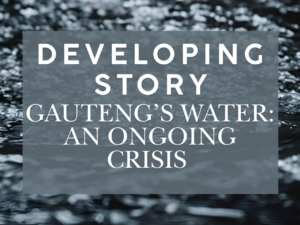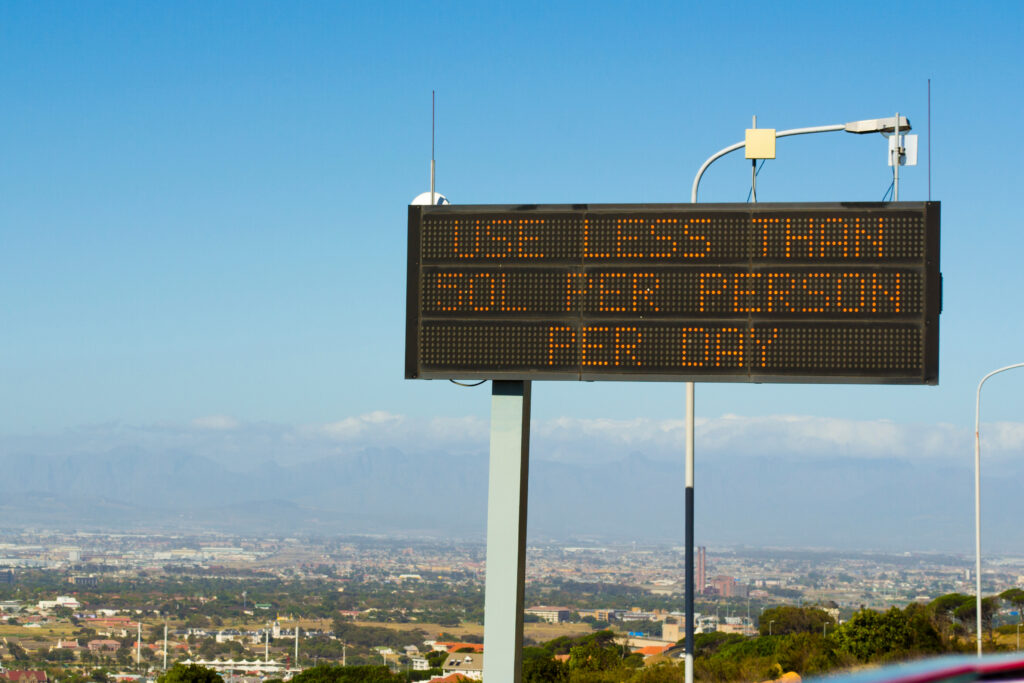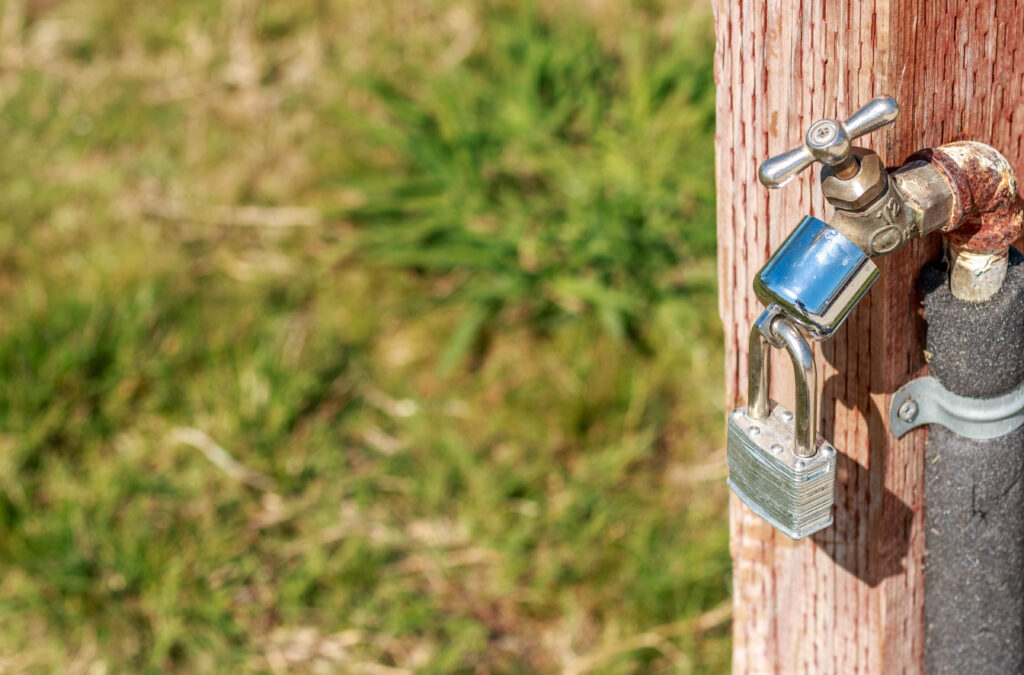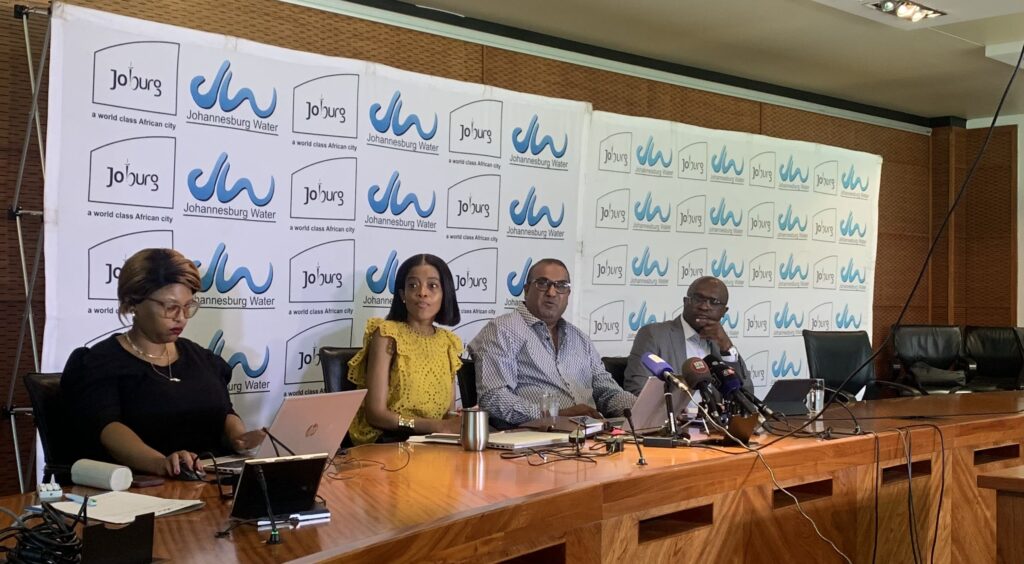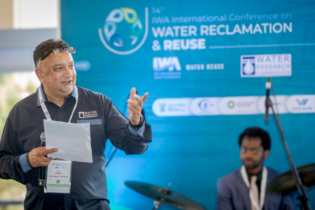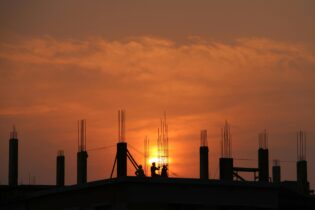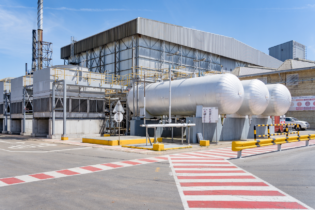Intermittent supply, excessive use, and ageing infrastructure have left Gauteng’s residents worried about a ‘day zero’ scenario. The latest blow to confidence is the implementation of Level 1 water restrictions, which could be pushed up to Level 3 in the future.
While there have been various crises in Gauteng, and particularly Johannesburg, there has always been a reassurance from Rand Water, a world-leading supplier of bulk water, that there will not be a ‘day zero.’ Johannesburg Water and the Department of Water Sanitation have echoed this message. Recently this sentiment has changed, and while the City of Johannesburg and Rand Water have said that it is still not a ‘day zero’ situation, the current supply crisis is in Joburg’s executive mayor Dada Morero’s words “severe.” Rand Water in a statement released on October 24 says, “There is a real risk of supply depletion unless municipalities implement our recommendations.” The key recommendation is that municipalities reduce their water losses, repair leaks, enforce by-laws, and address illegal connections.What is the problem
The various stakeholders agree that the key problems are:- Excessive municipal use: Simply put, Gauteng municipalities are withdrawing too much of their supplied water. This practice leads to a supply-side problem that Rand Water say is impossible to address as they are extracting all the water that their use license allows.
- Supply constraints: South Africa is a water-scarce country, and the water use licenses it issues have strict controls for how much water can be extracted. Rand Water is operating at full capacity and the excessive withdrawal by municipalities cannot be rectified by Bulk Water Suppliers.
- Infrastructure: So, there is enough water, so much so that municipalities are using too much, this begs the question “So, if there is no major supply problem, and municipalities are using too much water, where is the water?” The reality is that close to 50% of water in South Africa is lost to leaks, inefficiencies, illegal water connections, and vandalism. This means municipalities are using more water, in an unsustainable manner, and then half that water never reaches end-use.
What do the restrictions mean
There are 5 levels of restriction:- Water Wise: No imposed restrictions, people are encouraged to use water efficiently and in line with “water wise” principles.
- Level 1: You are here. Restrictions imposed on watering gardens, water use in parks and sports fields, and car washes.
- Level 2: Stricter impositions on watering gardens, and car washes. Additionally, restrictions on swimming pools.
- Level 3: Highest restrictions before disaster, no water may be used outside of essential use which includes drinking and hygiene.
- Emergency response: During a disaster severe restrictions are imposed on all water.
Who is at fault?
While it may seem like a good idea to point fingers, experts within the water sector agree that responsibility for the water crisis does not rest with one entity, but with all. Water Can, an organisation that encourages active citizenship in water, say “This crisis is a decade in the making.” The years of state capture, mismanaged municipalities, and year-long delays in key projects have joined their impact to create the current conditions, ripe for disaster.What can be done?
The mission to avoid day zero should be seen as the mission to provide long-term water security. This can only be done by adding and maintaining infrastructure. This year Rand Water set out on a massive maintenance project to secure its supply infrastructure, following this the City of Johannesburg has also started its infrastructure upgrades projects. The eventual finalising of the Lesotho Highlands Water Project (LHWP) tunnel, one of the delayed projects that led to this crisis, is also on the horizon. These large-scale projects will help with water security, but the immediate focus is on balancing the supply with the demand. This is currently being done through Level 1 restrictions in Gauteng, but Deputy President Paul Mashatile has said, “DWS is working with municipalities to implement Level 2 and 3 water restrictions” which were the same steps that the City of Cape Town set out in their avoiding day zero initiatives. There is a crisis, it is not yet a disaster. Citizens are encouraged to report leaks to their municipality, not rand Water, and use water sparingly and sustainably.Updates:
Stopping illegal connections
On Tuesday the 12th of November Johannesburg Water and the Johannesburg Metropolitan Police Department (JMPD) engaged in a project to shut down illegal water connection in Lenasia South. This project was short-lived as the community mobilised against the JMPD, throwing rocks while protesting the shut-offs. JMPD fired rubber bullets to disperse the crowd but eventually were called off. Phumla Mqashi, the area in question, does not have formal water infrastructure and was reliant on water tankers. The tankers were vandalised and illegal water connections were made. Johannesburg Water hopes to reinstate the tankers in the area and disconnect the illegal water connections. An operation on the 15th of November 2024 aims to disconnect illegal water connections in Emdeni, Soweto. Illegal water connections are not only a threat to billing but the makeshift plumbing has a severe impact on the formal water system causing leaks and pressure problems. The last operation on November 13th, Johannesburg Water was met with hostility, this operation will review safety measures and ensure the wellbeing of their employees. The South African Police Service, JMPD, and the Public Ordering Services are on standby for the duration of the procedure.Additional measures
From Thursday the 14th of November Johannesburg Water will implement nighttime throttling of water supply. Between 9 pm and 4 am the supply will be reduced in an effort to save water.Area-specific
Hammanskraal The government has urged the residents of Hammanskraal in Gauteng to exercise patience while work is underway to install a new water treatment plant at the Klipdrift Water Treatment Works.The call was made by Minister in the Presidency, Khumbudzo Ntshavheni, during a post-Cabinet media briefing held in Cape Town on Wednesday.
“In 2023, the Ministry of Water and Sanitation directed Magalies Water to urgently intervene in terms of the Water Services Act, 1997 (Act 108 of 1997) and to design and install a new water-treatment plant at its Klipdrift Water Treatment Works near Hammanskraal. “This will help ease the water challenges and provide long-term solutions. This additional water treatment plant will supply water to certain reservoirs in the city’s water distribution system to increase the supply of clean drinking water to Hammanskraal. “The government urges the people of Hammanskraal and surrounding areas to be patient while this work is underway. The first phase is expected to be completed by 15 November 2024. This will allow the City of Tshwane to deliver potable water to some areas of Hammanskraal,” she said. “The City of Tshwane is currently implementing a R278 million project to repair the previously dysfunctional Rooiwal Wastewater Treatment Works (WWTW). “It is expected that increasing the capacity of the Rooiwal WWTW will cost about R2 billion. Cabinet was informed that the City of Tshwane will have to fund this project through revenue, borrowing or its Urban Settlements Development Grant allocations from the Department of Human Settlements,” she said. Water supply issues at the Commando system necessitate intervention Amid Gauteng’s water restrictions to avert a supply-side crisis, various systems affected by mid-November maintenance at Eikenhof are struggling to recover. Residents across Johannesburg are experiencing low pressure and no supply. During November 2024 emergency maintenance by City Power at the Eikenhof booster station resulted in a disruption of supply across Johannesburg, although the maintenance work is completed, Johannesburg Water says, “certain systems are still impacted and are not making a full recovery.” The Commando system Johannesburg Water managing director Mr Ntshavheni Mukwevho explains, “The Commando system has been an issue for a while, it is a very sensitive system so when supply is interrupted it takes longer to recover.” Residents who live in areas supplied by the Brixton Reservoir, Crosby Reservoir, and the Hursthill 1 and 2 reservoirs are either currently without water or low pressure, and Johannesburg Water assures the public that measures are being taken to ensure the full recovery of that system. Part of the system recovery includes throttling supply and reduced flow to ensure the demand does not overtake the recovering supply, which can appear that there is no water when in reality the system is slowly recovering. Logan Munsamy, operations manager for Johannesburg Water, says, “The ongoing issues at the Commando system, necessitated broader reform. This is why we have invested in refurbishing and upgrading the system to better serve the community.”- New Crosby bulk infrastructure project, including a pump station, rising main and Randwater supply line. The scope includes installing a standby generator to mitigate the effects of load shedding and improve pump efficiency to the Brixton reservoir including a booster pump to supplement supply to Hurst Hill from the Crosby Reservoir. The project is expected to run for 18 months, cost 305 million rand, and begin in September 2024. This project is currently in the procurement stage.
- Construction of a new tower with 1.4 Ml of storage, and a new reservoir with 22 Ml of storage in Brixton. This project will run for 18 months, cost 318 million rand and is expected to begin in April 2025.
- Renewal of Hurst Hill 2, Internal repair and lining of the 23 ML Reservoir, In-situ-lining of 600mm diameter bypass pipeline and replacement of associated valves and fittings. This project is costed at 26 million rand and will take 13 months to complete.


